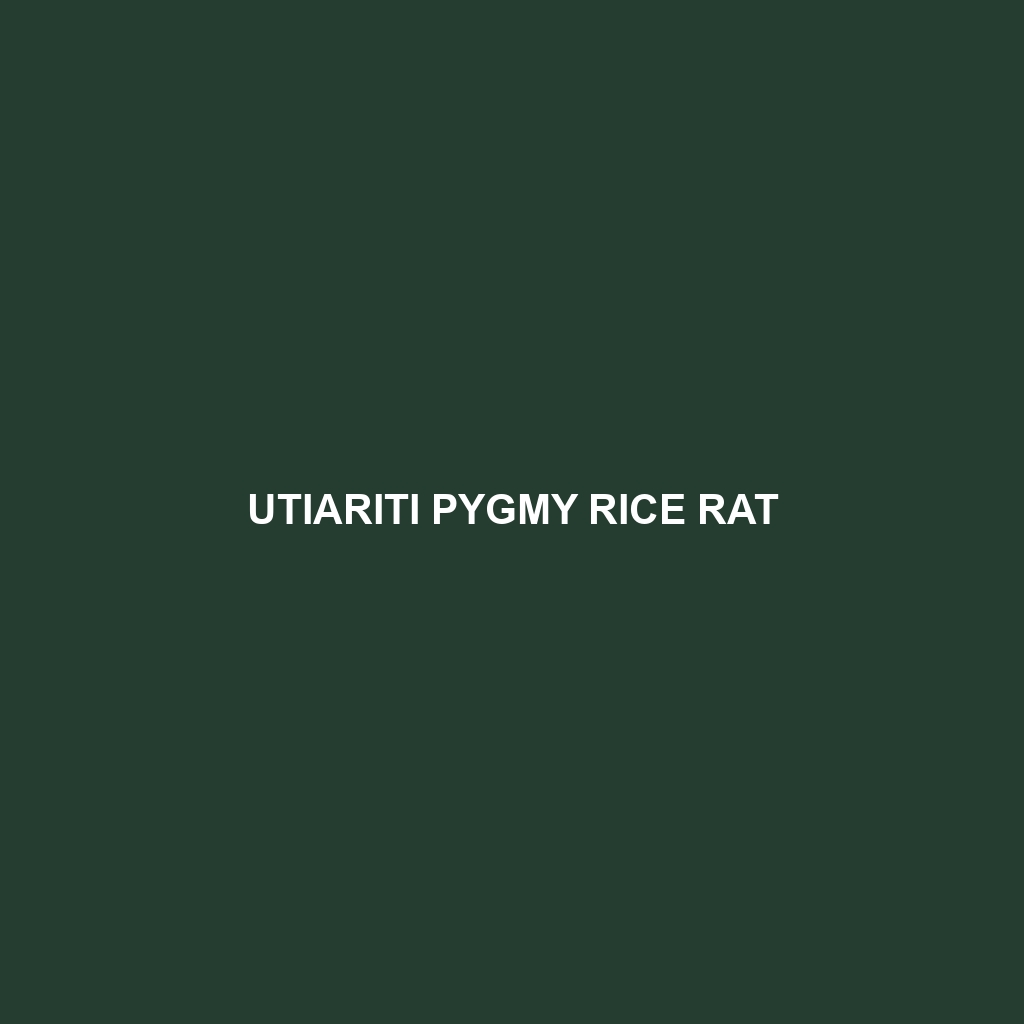Utiariti Pygmy Rice Rat ()
Habitat:
The Utiariti Pygmy Rice Rat is primarily found in the humid regions of coastal forests and grasslands of South America, particularly in the northeastern parts of Brazil and the surrounding rainforests. These rodents prefer environments that offer dense cover, such as tall grasses and shrubs, which provide shelter and protection from predators.
Physical Characteristics:
Measuring approximately 10 to 15 centimeters in length, the Utiariti Pygmy Rice Rat exhibits a small and compact body shape. Its fur is typically a mix of brown and gray, providing effective camouflage within its natural habitat. Notable features include large eyes and ears, adapted for nocturnal activity, as well as a long, scaly tail that aids in balance and navigation through dense vegetation.
Behavior:
The Utiariti Pygmy Rice Rat is primarily nocturnal, emerging at night to forage and navigate its environment. It is known for its agile climbing abilities, often observed scaling trees and shrubs in search of food. Socially, these rats can be found in small groups, exhibiting a range of vocalizations and behaviors during interactions, such as grooming and play.
Diet:
This species is primarily herbivorous, feeding on a variety of seeds, fruits, and plant materials. Its diet may also occasionally include insects, making it a flexible forager in its habitat. The Utiariti Pygmy Rice Rat plays a key role in seed dispersal, contributing to the regeneration of plant communities in its ecosystem.
Reproduction:
Breeding occurs throughout the year, with peak seasons often coinciding with periods of abundant food supply. Female Utiariti Pygmy Rice Rats reach sexual maturity in just a few months and can produce litters of 2 to 4 offspring every few weeks. Parental care is noticeable as females nurture and protect their young until they are ready to venture into the world independently.
Conservation Status:
The Utiariti Pygmy Rice Rat is currently classified as vulnerable due to habitat loss from deforestation and agricultural expansion. Conservation efforts are essential to protect this species and its natural habitat, ensuring the survival of its population in the wild.
Interesting Facts:
Despite its small size, the Utiariti Pygmy Rice Rat is an essential player in its ecosystem. It is known to create intricate burrow systems, which can also provide a habitat for other small animals and insects. Furthermore, its ability to adapt to various environmental changes demonstrates its resilience in the face of habitat modifications.
Role in Ecosystem:
The Utiariti Pygmy Rice Rat serves as an important prey species for various predators, including snakes and birds of prey. Its foraging activities help maintain plant populations by dispersing seeds. Additionally, by aerating the soil through burrowing, it contributes to the overall health of the ecosystem.
